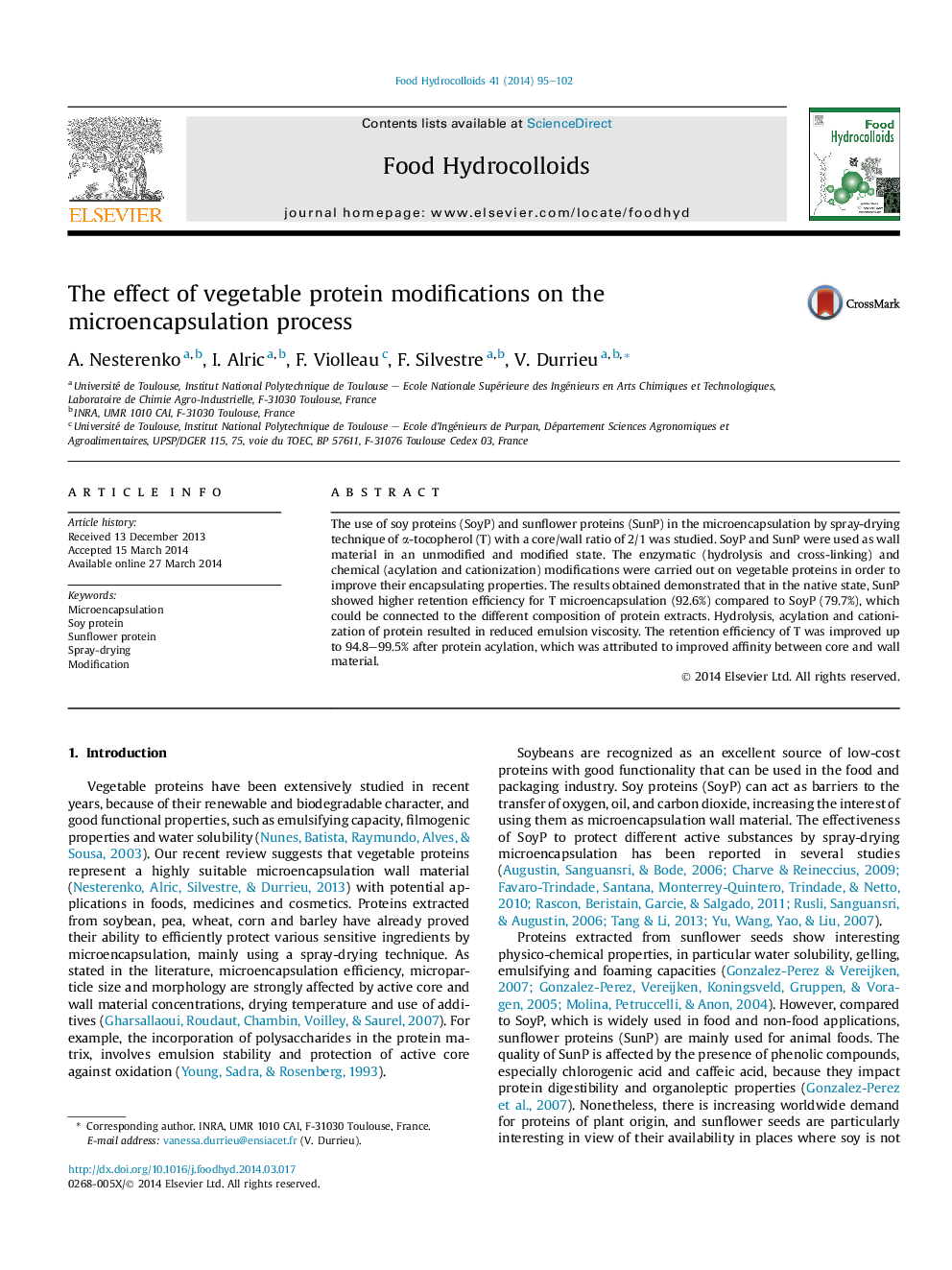| Article ID | Journal | Published Year | Pages | File Type |
|---|---|---|---|---|
| 605044 | Food Hydrocolloids | 2014 | 8 Pages |
•SoyP and SunP were efficient wall materials for microencapsulation.•Non-modified SunP was more efficient coating compared to SoyP.•Protein cationization resulted in decrease of α-tocopherol retention.•N-acylation of proteins improved retention efficiency of core.•Affinity between core and wall materials plays a major role in encapsulation.
The use of soy proteins (SoyP) and sunflower proteins (SunP) in the microencapsulation by spray-drying technique of α-tocopherol (T) with a core/wall ratio of 2/1 was studied. SoyP and SunP were used as wall material in an unmodified and modified state. The enzymatic (hydrolysis and cross-linking) and chemical (acylation and cationization) modifications were carried out on vegetable proteins in order to improve their encapsulating properties. The results obtained demonstrated that in the native state, SunP showed higher retention efficiency for T microencapsulation (92.6%) compared to SoyP (79.7%), which could be connected to the different composition of protein extracts. Hydrolysis, acylation and cationization of protein resulted in reduced emulsion viscosity. The retention efficiency of T was improved up to 94.8–99.5% after protein acylation, which was attributed to improved affinity between core and wall material.
Graphical abstractFigure optionsDownload full-size imageDownload as PowerPoint slide
